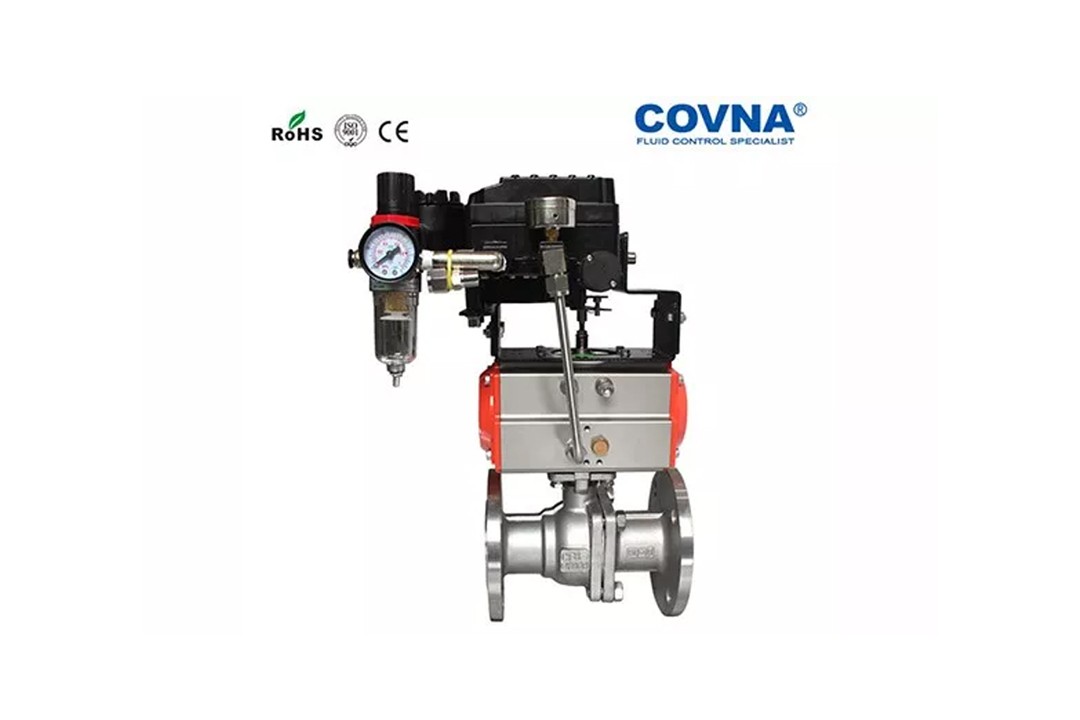Pneumatic valves are actuating components that operate valves using compressed air. They have relatively fast opening and closing speeds and are commonly used for quick two-position cut-off applications, as well as for regulating flow. Since they operate primarily on air sources, they are highly practical in flammable and explosive environments and can be used to control gases, liquids, oils, and various corrosive media.

The accessories used in pneumatic valves often vary. By pairing them with different components, various control methods can be achieved. Users can configure the valves according to their specific operational requirements. The main types of pneumatic valves include pneumatic control valves, pneumatic ball valves, pneumatic gate valves, and pneumatic butterfly valves.
I. Introduction to Pneumatic Air Treatment Units
1. The pneumatic air treatment unit is one of the most common accessories in pneumatic valve systems. Its function can be summarized as filtration + pressure reduction + lubrication. Among these, the pressure regulator is an essential component. Regardless of the function of the pneumatic valve, a pressure regulator must be installed to provide a standard power air source pressure, typically 0.4-0.7 MPa.

2. The pressure regulator reduces the inlet pressure to a required outlet pressure and maintains stability using the energy of the medium itself.
• Two-piece unit (filter and pressure regulator): Completes the filtration and pressure reduction of compressed instrument air.
• Three-piece unit (filter, pressure regulator, and lubricator): In addition to filtration and pressure reduction, it also lubricates the air supply.
II. Introduction to Pneumatic Solenoid Valves
1. Pneumatic solenoid valves, also known as directional control valves, are essential for two-position on/off valve applications. Solenoid valves control the opening and closing of pneumatic valves by magnetization/demagnetization.
2. Function:
• Solenoid valves are primarily used for switching valves.
• They control the passage of the air supply via an electrical signal to regulate the valve’s operation.
• Definition: A valve that uses an electromagnet to manipulate the movement of the valve core, generally controlling the actuator’s motion to achieve the opening and closing of the valve.
III. Introduction to Pneumatic Valve Limit Switches
1. Pneumatic limit switches, also known as travel switches or position feedback devices, are field instruments used in automated control systems to detect valve status. They output the valve’s open or closed position as a switching signal (contact signal), which can be received by a programmable logic controller (PLC) or computer for execution of the next command.
2. This device can also be used for valve interlock protection and remote alarm indication in automation systems. If monitoring the valve position of a two-position valve is required, a limit switch is an effective configuration. It serves as an electrical switch that signals and feeds back the mechanical movement's extreme positions.

IV. Pneumatic Valve Positioners
A pneumatic valve positioner is an essential accessory for pneumatic control valves. It allows the valve to be adjusted to any position by taking the valve stem displacement signal as the input feedback signal and the controller output signal as the setpoint. When a deviation occurs, the positioner adjusts the output signal sent to the actuator, ensuring a one-to-one correspondence between the valve stem position and the controller signal.
V. Considerations for Selecting Pneumatic Valves
1. If the control valve operates under safety-critical conditions, an additional solenoid valve is necessary to force the valve into a safe position in case of emergencies.

2. For large-capacity cylinder valves, a pilot valve is required to accelerate the valve’s actuation speed.
• Function: The pilot valve allows a small volume of air signal to control the switching of a larger air volume pipeline, thereby enabling fast filling/exhausting of the actuator.
• Types: There are different types of pilot valves, which should be selected based on the specific requirements of the pneumatic valve.
3. For control valves that require precise positioning, a valve position transmitter must be installed.
• This device provides feedback on the valve’s opening position at any given moment.
• Depending on the process requirements, the valve may need to be normally open, slow-closing, or slow-opening and normally closed. In such cases, a pneumatic damper should be installed.
• The damper controls the airflow rate to adjust the valve actuation speed accordingly.
By considering these factors, users can optimize the performance and reliability of pneumatic valve systems for various industrial applications.











